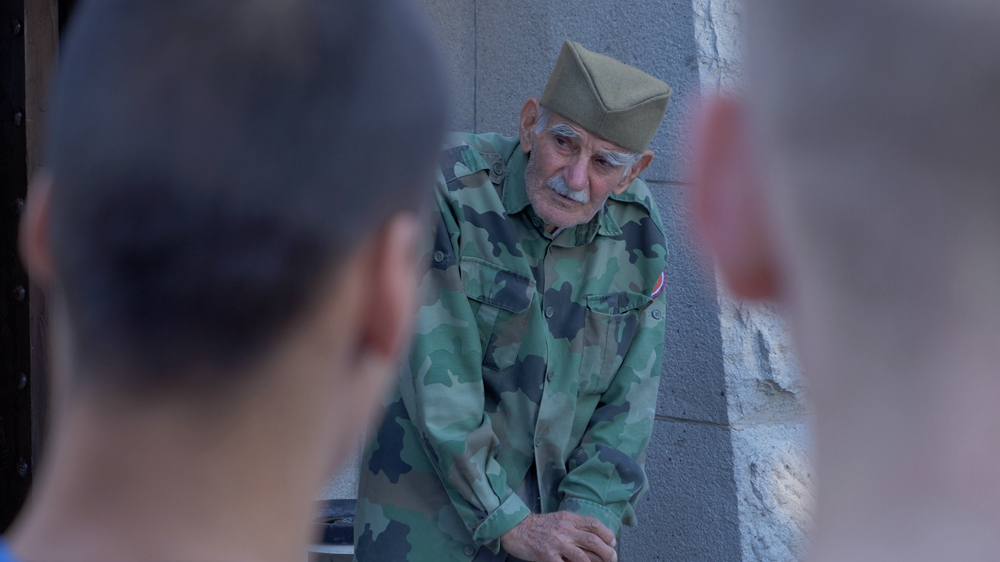
World
18:15, 11-Nov-2018
Is the truth hidden by history?
Updated
17:12, 14-Nov-2018
By Aljosa Milenkovic

Today marks exactly 100 years since World War I ended. It was called The Great War and "the war to end all wars." But it didn't. The war brought devastation to large parts of Europe, death to over 15 million people and the collapse of three huge empires.
WWI started in the Balkans, and according to popular Western narrative, it ended with Western allies defeating German armies on the western front. But did it happen like that?
Ask yourself, do you believe in, for example, Jesus Christ? Do you believe that he was a historical figure, a living person, who walked this earth? If you don't, billions around the world do. And they don't need any scientific proof of his existence. They just believe in stories that are circulating throughout the humanity for the last two millennia. That's why those people are called believers.
Stories about the end of WWI can be put in very much a similar context. Millions around the world believe in a story that has been circulating for over nine decades now: That WWI was decided by the Amiens Offensive at the Western Front.
But many historians and historical documents have disputed those pop culture claims, saying that the key battle that crushed the Central Powers backbone was a strong push of the Serbian army supported by the allied forces at the Southern, so-called, Salonica Front.

Đorđe Mihailović, Zeitenlik cemetery keeper, talks to the visiting students from Serbia. /CGTN Photo
Đorđe Mihailović, Zeitenlik cemetery keeper, talks to the visiting students from Serbia. /CGTN Photo
Guardians of the memories
Zeitenlik is an Allied military cemetery in Thessaloniki, Greece's second largest city, located in the north of the country.
Almost 22,000 soldiers who died in the Salonica campaign were laid to rest here. Almost 8,000 of them were Serbian. It's just a fraction of all the lives lost at the Salonica front.
On the late afternoon of October 7, dozens of Serbian school children arrived at the cemetery after traveling for hundreds of kilometers over two borders, just to pay respects to their ancestors and also to learn more about their glorious past. Serb Đorđe Mihailović, 91, greeted them. He is the third and last generation of cemetery keepers from his family.
Both Đorđe's grandfather and father are buried here, and so will Đorđe, when the time comes. Till then, he proudly does maintenance at this site that many Serbs and Greeks regard as sacred.

Serbian basilica at the Zeitenlik military cemetery. /CGTN Photo
Serbian basilica at the Zeitenlik military cemetery. /CGTN Photo
By 1915, an army from the small Kingdom of Serbia repelled a number of massive offensives from the Central Powers. But by then, its troops were exhausted, outnumbered with limited support from the allies. They were forced to retreat to Greece, taking along with them thousands of civilians.
The Serbian army refused to surrender despite catastrophic losses. Under the Russian emperor's ultimatum, Allied Powers at the end helped evacuate Serbian troops to Greece, where they've recuperated, and in 1916 were sent to Salonica front, close to Thessaloniki, only to write history.
Thessaloniki
Thessaloniki is the birthplace of a song which was allegedly written by a Serbian soldier to his Greek girlfriend before he was sent to the front, just north of this city.
It was Georgios Dalaras who made this song world famous. But regardless of whether the story about how this song originated is true or not, the context in which it was seen, can melt a stone cold heart.

Thessaloniki with its iconic tower. /CGTN Photo
Thessaloniki with its iconic tower. /CGTN Photo
"Do not be angry with me, my dearest, now that I am going away from you," the song says. "Let me see you, let me say goodbye. Open your window, my golden basil, my princess, and with a sweet smile, wish me a good night."
Over 1.2 million Serbs, 28 percent of the entire population, died in WWI. Around 10,000 of them perished in the 1916 battle for Kajmakcalan peak that rises over 2,500 meters high on the border between Greece and then-occupied Serbia.
It took a lot of time and a 21st century SUV to help us reach the top of the mountain. Seeing the steepness of the mountain peak, it was difficult to even imagine how it was back in 1916 when thousands of Serbian troops stormed uphill. In the end, thousands of them perished, but they were successful in liberating the first few square meters of their homeland.
Kajmakcalan battle was a prelude to a massive breakthrough led by Serbian soldiers in September 1918 on the Salonica front. As a result, the Bulgarian army capitulated, and the German troops were crushed by the vastly outnumbered Serbians.

Professor Mile Bjelajac from the Institute of Recent History of Serbia. /CGTN Photo
Professor Mile Bjelajac from the Institute of Recent History of Serbia. /CGTN Photo
Professor Mile Bjelajac from the Institute of Recent History of Serbia spent a significant part of his life researching the role of the Serbian Army in WWI, particularly near its end in 1918.
"There is one famous telegram, written in anger by German emperor Wilhelm the Second and sent to his Bulgarian counterpart Coburg, saying: 'Shame! Sixty-two thousand Serbian soldiers decided the outcome of the war'." Professor Bjelajac says. "I think it is the greatest recognition of the Serbian Army, its commanders and the allies which supported them."
Defeated by the Serbian Army, Bulgaria and the Austro-Hungarian Empire collapsed and Germany was forced to seek peace on the Western front.
According to many historians, 100 years after, popular culture and the Western-dominated narrative resulted in the near obliteration of the achievements and bravery of a small Serbian Army that brought two mighty empires and three emperors to their knees.

SITEMAP
Copyright © 2018 CGTN. Beijing ICP prepared NO.16065310-3
Copyright © 2018 CGTN. Beijing ICP prepared NO.16065310-3